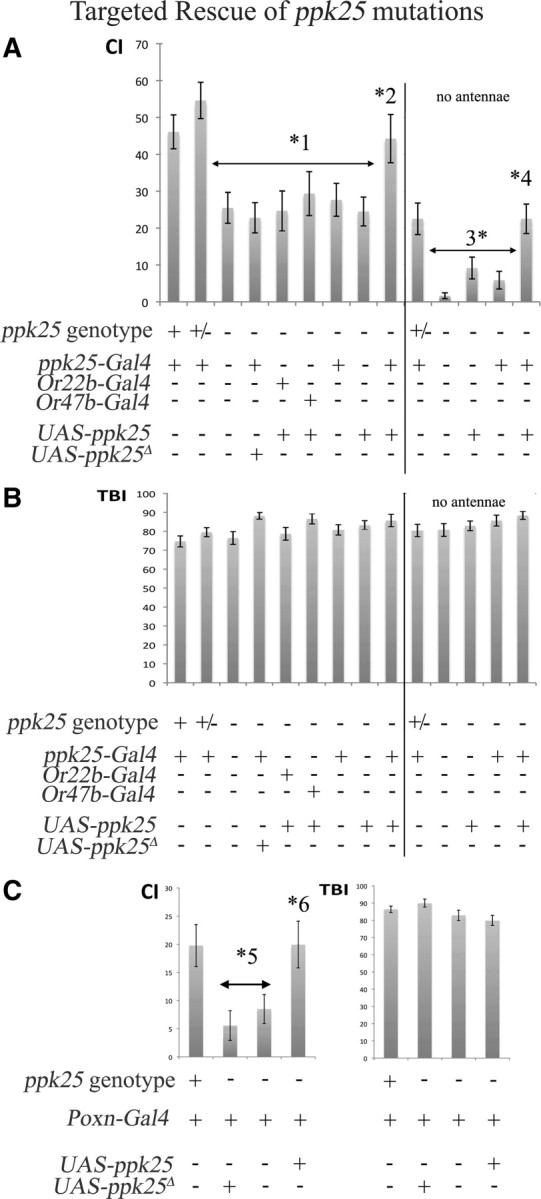Figure 6.

Targeted expression of ppk25 in gustatory neurons rescues the courtship behavior of ppk25 mutant males. Courtship behavior was measured for the males containing the transgenes indicated, and of the following genotypes: control males that are wild-type for ppk25, +; males heterozygous for a deletion spanning ppk25, +/−; males heterozygous for two different deletions spanning the ppk25 gene, −. A, targeted expression of ppk25 using ppk25-Gal4 rescues male courtship. Right panel, labeled as “no antennae,” shows experiments in which the third antennal segment was removed bilaterally. In all cases, * indicates a statistically significant difference, p < 0.05. Statistically significant differences are as follows: *1, between control males carrying one or two copies of the wild-type ppk25 gene and ppk25 mutants with various combinations of transgenes; and *2, between homozygous ppk25 mutants expressing ppk25 under control of ppk25-Gal4 and homozygous ppk25 mutants carrying other combinations of transgenes. *3, *4 refer to the corresponding differences among antennaless males. B, Males of all genotypes have a similar TBI. C, The ppk25 mutant phenotype is rescued by targeted expression of ppk25 in all gustatory neurons using the Poxn-Gal4 driver (Boll and Noll, 2002). Statistically significant differences between control males and ppk25 mutant males with various transgenes, and between ppk25 mutants with various transgenes and males expressing ppk25 under control of Poxn-Gal4, are indicated by *5 and *6, respectively. Here also, males of all genotypes have similar TBIs.
